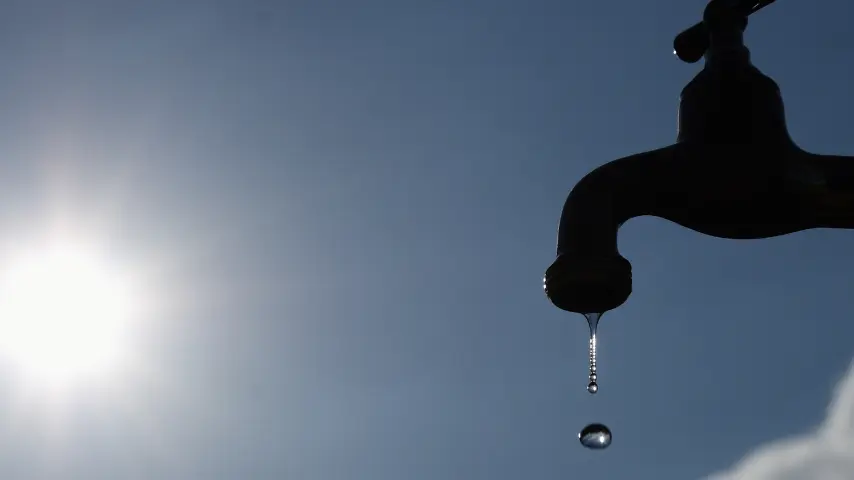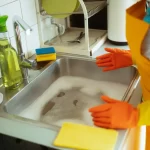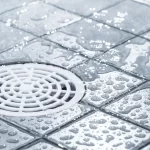As winter approaches, the dropping temperatures can pose a serious threat to your home’s plumbing system. Many Toronto residents find themselves wondering, “How can I winterize my home’s plumbing?” as the frost begins to set in. Preparing your pipes for the cold weather is essential to avoid the inconvenience and expense of plumbing repairs.
To ensure your plumbing remains in excellent condition throughout the winter months, follow these top 10 winter plumbing tips. These practical steps will help keep your water flowing smoothly and prevent potential issues caused by freezing temperatures.
1. Insulate Your Pipes
Exposed pipes are particularly vulnerable to freezing during the winter months, especially those located in unheated areas like basements, attics, and garages. When water inside these pipes freezes, it expands, potentially causing pipes to burst and resulting in significant water damage to your home.
Effective Insulation Methods:
- Foam Insulation: Wrap exposed pipes with foam insulation sleeves. These are easy to install and provide a protective barrier against the cold.
- Heat Cables: Use thermostatically controlled heat cables for pipes in especially cold areas. These cables keep pipes warm by providing a steady source of heat.
- Pipe Insulation Wraps: Insulation wraps are another affordable option to shield your pipes from freezing temperatures.
Key Areas to Insulate:
- Exterior Walls: Pipes running along exterior walls are more susceptible to freezing. Ensure these are well insulated.
Unheated Spaces: Focus on pipes in attics, basements, and garages. Insulating these areas can prevent severe freezing issues.
2. Fix Leaks Promptly
Promptly addressing leaks is crucial during the winter months to prevent them from escalating into major plumbing emergencies. Even minor leaks can lead to significant problems if left unattended, especially in cold weather.
Steps to Address Leaks:
- Regular Checks: Inspect areas prone to leaks, such as under sinks, around water heaters, and near exterior walls.
- Temporary Solutions: For immediate fixes, use waterproof tape or sealant to control leaks until a permanent repair can be made.
- Permanent Repairs: If you notice persistent moisture or dripping, replace damaged sections of pipes to ensure a long-term solution.
Upgrades for Winter:
- Frost-Proof Faucets: Consider installing frost-proof faucets to prevent freezing and bursting.
- Insulated Pipe Sleeves: Upgrade to insulated pipe sleeves for better protection against winter temperatures.
3. Keep the Heat On
Maintaining a consistent temperature in your home is essential to prevent pipes from freezing. During extreme cold, keeping your thermostat set to at least 55°F helps protect your plumbing system.
Heat Maintenance Tips:
- Thermostat Setting: Set your thermostat to a minimum of 55°F, even if you’re away from home. This ensures a steady temperature that helps prevent frozen pipes.
- Programmable Thermostat: Invest in a programmable thermostat to manage your home’s heating efficiently. Set schedules to keep your home at a safe temperature during the winter months.
Benefits:
- Consistent Temperature: A stable indoor temperature reduces the risk of pipes freezing.
Energy Efficiency: A programmable thermostat optimizes heating, potentially lowering your energy bills while keeping your home warm.
4. Allow Faucets to Drip

Allowing your faucets to drip slightly during extremely cold weather is a simple yet effective winter plumbing strategy. This small flow of water helps prevent your pipes from freezing and bursting, a common issue during winter plumbing emergencies. Keeping water moving, even at a minimal rate, reduces pressure buildup within the pipes, significantly lowering the risk of a freeze-induced rupture.
Why Dripping Helps:
- Prevents Freezing: A continuous trickle of water keeps the water moving through the pipes, reducing the likelihood of it freezing.
- Reduces Pressure: Dripping water helps alleviate pressure that can build up in frozen pipes, preventing bursts.
Focus Areas:
- Unheated Spaces: Pay special attention to faucets connected to pipes running through unheated or vulnerable areas, such as basements, garages, or exterior walls.
Outdoor Faucets: This tip is especially beneficial for winterizing outdoor faucets. The trickling water prevents stagnation and freezing inside the pipes.
5. Seal Cracks and Holes
Sealing gaps and openings where pipes run through walls or floors is essential for winter plumbing protection. These vulnerabilities can let cold air in, which can lower the temperature around your pipes and increase the risk of freezing and bursting.
Sealing Methods:
- Weatherproofing Materials: Use caulk or insulation foam to seal gaps and cracks around pipes. This helps keep cold drafts out and maintains a stable temperature around your plumbing.
- Focus on Vulnerable Areas: Pay particular attention to areas in unheated spaces like basements, attics, and garages, where pipes are more exposed to cold temperatures.
Benefits:
- Prevents Cold Air Infiltration: Sealing gaps keeps the cold air away from your pipes.
- Maintains Stable Temperature: Helps in maintaining a consistent temperature around the pipes, reducing the risk of freezing.
6. Disconnect Outdoor Hoses
As winter approaches, it’s crucial to manage your outdoor hoses properly to prevent damage from freezing temperatures. Water left in outdoor hoses can freeze and expand, leading to damage to both the hose and the plumbing.
Steps to Prepare Outdoor Hoses:
- Remove and Drain Hoses: Detach all outdoor hoses from their spigots and drain them completely. This ensures no water is left inside to freeze and expand.
- Store Properly: Coil the hoses neatly to avoid kinks and store them in a dry, sheltered area. This helps prolong their lifespan and ensures they are ready for use when spring arrives.
Hose Bibs Management:
- Close Inside Valves: Turn off the inside valves that supply water to outdoor hose bibs. This prevents water from flowing into the outdoor portion of the pipes.
Open Outdoor Valves: Go outside and open the hose bibs to allow any remaining water in the pipes to drain out. This reduces pressure and prevents freezing.
7. Service Your Water Heater

Winter’s cold weather places additional strain on your water heater, making regular maintenance crucial. Ensure your water heater is functioning optimally by performing the following tasks:
Maintenance Steps:
- Flush the Tank: Sediment buildup can impair your water heater’s efficiency and reduce its heating capacity. Flushing the tank annually helps remove this sediment. This maintenance is especially important for older heaters but benefits even newer models.
- Inspect for Wear and Leaks: Regularly check your water heater for any signs of wear or leaks. Addressing these issues promptly can prevent larger problems.
- Check Temperature Settings: Set the temperature between 120-125°F. This range provides a good balance between energy efficiency and ensuring a steady supply of hot water.
Professional Help:
- If you’re not comfortable performing these tasks, hiring a professional plumber is advisable. Regular maintenance not only extends the life of your water heater but also ensures its efficiency during peak usage times in winter.
8. Know Your Main Water Valve
Knowing the location and operation of your main water valve is crucial for handling plumbing emergencies, particularly during winter when the risk of frozen pipes and bursts is higher.
Key Actions:
- Locate the Valve: Typically found near the water meter — often in the basement, a utility area, or an external wall. Familiarize yourself with its location and operation.
- Keep Tools Handy: Some valves require a wrench to turn. Ensure you have the necessary tools nearby and check periodically to ensure the valve is not stuck.
Emergency Response:
- Shut Off Valve: In the event of a burst pipe, turning off the main water valve immediately stops the flow of water into your home, minimizing potential water damage.
Relieve Pressure: After shutting off the main valve, open faucets to relieve any remaining pressure in the pipes..
9. Keep Indoor Areas Well Ventilated
Proper ventilation is crucial for areas where plumbing is present to prevent freezing and condensation.
Ventilation Tips:
- Maintain Warmth: Ensure areas like under kitchen and bathroom sinks are well-ventilated and kept warm. Opening cabinet doors under sinks allows warm air to circulate around the pipes.
- Use Space Heaters: Consider using a small space heater or a heat lamp in particularly cold areas, but always follow safety guidelines to avoid fire hazards.
- Dehumidifiers: Use a dehumidifier in high-moisture areas to prevent condensation on pipes, which can freeze and cause damage.
10. Professional Inspection
A pre-winter inspection by a professional plumber is a wise investment to ensure your plumbing system is prepared for the cold weather.
Benefits of Professional Inspection:
- Identify Issues: Professionals can spot hidden leaks, assess the condition of your pipes, and ensure your system is ready for winter.
- Address Vulnerabilities: For older homes, where pipes might be more susceptible to freezing and breaking, professional inspection can prevent costly damage.
Conclusion
By following these top 10 winter plumbing tips, Toronto homeowners can protect their plumbing systems from harsh winter weather. Stay proactive with regular maintenance, timely inspections, and effective preventative measures to ensure a worry-free winter and a smoothly running plumbing system.






